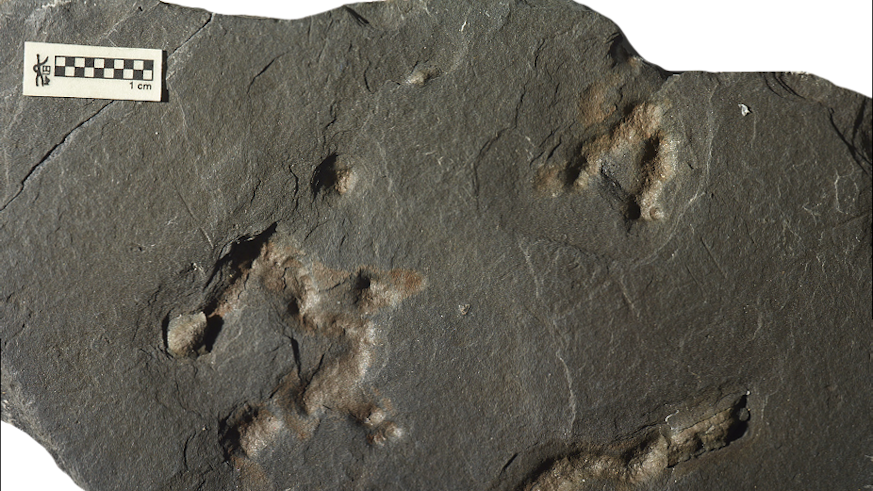Scientists discover oldest evidence of mobility on Earth
11 February 2019

Ancient fossils of the first ever organisms to exhibit movement have been discovered by an international team of scientists.
Discovered in rocks in Gabon and dating back approximately 2.1 billion years, the fossils suggest the existence of a cluster of single cells that came together to form a slug-like multicellular organism that moved through the mud in search of a more favourable environment.
The team, which included experts from Cardiff University, state that the new discovery places the first ever evidence of mobility on Earth to more than 1.5 billion years earlier than previously thought, and raises new questions regarding the history of life.
Previous discoveries dated the earliest traces of locomotion in complex organisms in much younger rocks dated at around 570 million years ago from various localities.
In a new study, published today in Proceedings of the National Academy of Sciences, the team report finding similar trace movements for complex organisms that thrived 2.1 billion years ago in the Francevillian inland Sea.
A detailed 3D analysis using a non-destructive X-ray imagining technique, alongside geometrical and chemical dating, revealed that the new fossils belong to an organism that likely spent most of its time in oxygenated waters, and was therefore oxygen-dependent.
The fossils are preserved as tubular structures running through the rock in thin layers with a consistent diameter of a few millimetres.
Located next to these tubular structures were fossilised microbial biofilms which, the researchers believe, acted as grazing grounds for the multicellular organisms.
Co-author of the study Dr Ernest Chi Fru, from Cardiff University’s School of Earth and Environmental Sciences, said: “It is plausible that the organisms behind this phenomenon moved in search of nutrients and oxygen that were produced by bacteria mats on the seafloor-water interface.
“The results raise a number of fascinating questions about the history of life on Earth, and how and when organisms began to move. Was this a primitive biological innovation, a prelude to more perfected forms of locomotion seen around us today, or was this simply an experiment that was cut short?”



